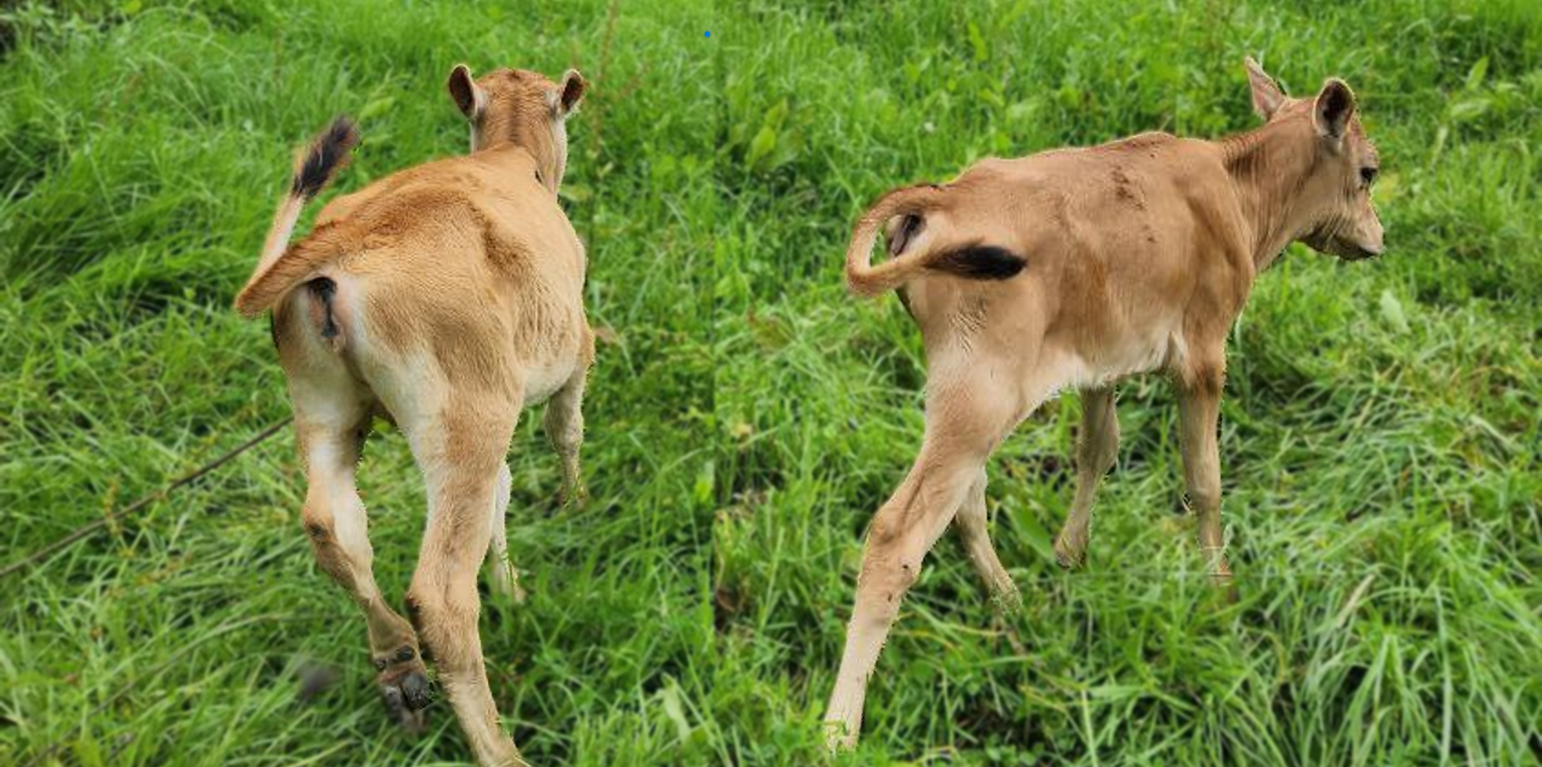Sexed semen technology
(Bhoutan)
Phomo Yewa Chheyti Yoe Pai Khab Soen Gi Thruel Rig (ཕོ་མོ་དབྱེ་བ་ཕྱེ་ཏེ་ཡོད་པའི་ཁབ་སོན་གྱི་འཕྲུལ་རིག།)
Description
Sexed semen technology produces gender-selected semen for artificially insemination of dairy cows. It ensures a higher proportion of female calves (more than 90%) which will ultimately contribute to the enhancement of milk production in the herd.
The Artificial Insemination (AI) program, initiated in 1987, has helped AI evolve into a widespread practice for dairy farms across Bhutan, with increasing accessibility due to improved road and transportation networks. The surge in demand for dairy products has positioned AI technology as key in transforming dairy farms from subsistence to market-oriented production systems.
A recent addition to the programme is the use of sexed semen, meaning sorting of semen before artificial insemination. Semen sorting involves categorizing bull semen based on the X and Y chromosomes, thus granting dairy land users control over calf gender. This empowers them to engage in selective breeding, enhancing desired traits and overall quality of dairy production.
Several key activities are integral to this technology:
•Rigorous selection of bulls with desirable traits related to milk production and overall health.
•Collection and preservation of semen from selected bulls.
•Semen sorting technology to separate X and Y chromosome-bearing sperm.
•Artificial insemination of dairy cows by extension agents who use sorted semen.
The benefits are multiple because achieving a higher proportion of heifer calves helps dairy land users to enhance breeding strategies and maintain desired traits within the herd. Economic benefits follow through increased dairy production and improved cattle health.
Land users express satisfaction with the technology and its impact. However, some households report problems with conception rates after AI with sexed semen. Despite these drawbacks, the overall benefits to dairy land users and the industry outweigh the limitations.
Lieu
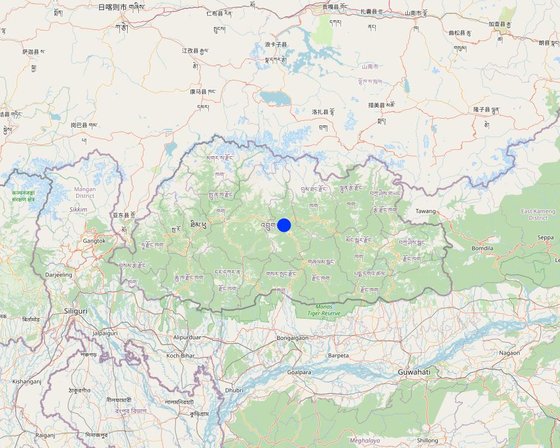
Lieu: Tshangkha, Tangsibji, Trongsa, Bhoutan
Nbr de sites de la Technologie analysés: site unique
Géo-référence des sites sélectionnés
Diffusion de la Technologie: appliquée en des points spécifiques ou concentrée sur une petite surface
Dans des zones protégées en permanence ?: Non
Date de mise en oeuvre: il y a entre 10-50 ans
Type d'introduction
-
grâce à l'innovation d'exploitants des terres
-
dans le cadre d'un système traditionnel (> 50 ans)
-
au cours d'expérimentations / de recherches
-
par le biais de projets/ d'interventions extérieures
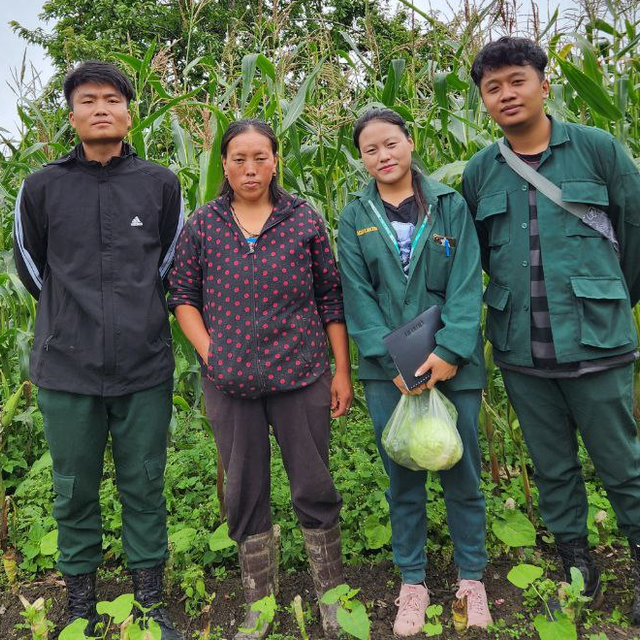
Enumerators meeting with the land user. (Damcho Zam)
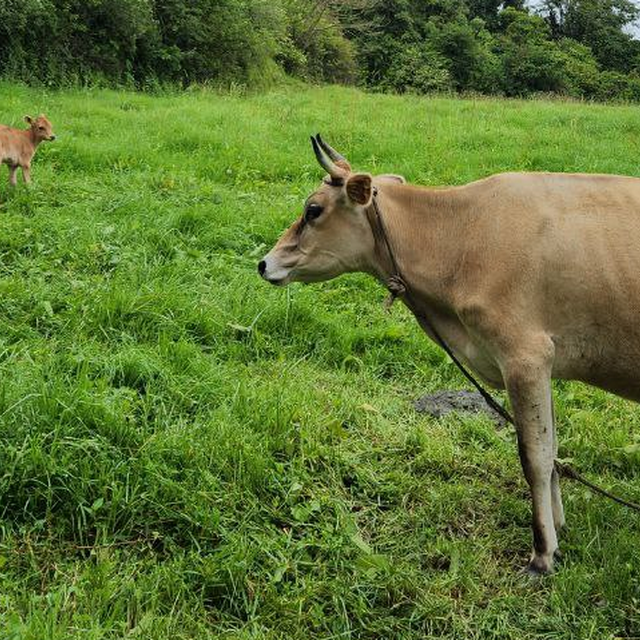
The area where the land user keeps their dairy cattle. (Damcho Zam)
Classification de la Technologie
Principal objectif
-
améliorer la production
-
réduire, prévenir, restaurer les terres dégradées
-
préserver l'écosystème
-
protéger un bassin versant/ des zones situées en aval - en combinaison avec d'autres technologies
-
conserver/ améliorer la biodiversité
-
réduire les risques de catastrophes
-
s'adapter au changement et aux extrêmes climatiques et à leurs impacts
-
atténuer le changement climatique et ses impacts
-
créer un impact économique positif
-
créer un impact social positif
-
Improves dairy production
L'utilisation des terres
Les divers types d'utilisation des terres au sein du même unité de terrain: Non
-
Terres cultivées
- Cultures annuelles: céréales - maïs, céréales - blé de printemps, plantes à racines et à tubercules - pommes de terre, légumes - légumes à feuilles (laitues, choux, épinards, autres), légumes - légumes-racines (carotte, oignon, betterave, autres)
Nombre de période de croissance par an: : 1
Est-ce que les cultures intercalaires sont pratiquées? Non
Est-ce que la rotation des cultures est appliquée? Oui
-
Pâturages
- Affouragement en vert/ zéro-pâturage
- Prairies améliorées
Type d'animal: bétail - laitier
Approvisionnement en eau
-
pluvial
-
mixte: pluvial-irrigué
-
pleine irrigation
But relatif à la dégradation des terres
-
prévenir la dégradation des terres
-
réduire la dégradation des terres
-
restaurer/ réhabiliter des terres sévèrement dégradées
-
s'adapter à la dégradation des terres
-
non applicable
Dégradation des terres traité
-
dégradation biologique - Bc: réduction de la couverture végétale, Bl: perte de la vie des sols
-
autre - Précisez: There is very minimal land degradation.
Groupe de GDT
-
gestion intégrée cultures-élevage
-
amélioration des variétés végétales, des races animales
Mesures de GDT
-
pratiques agronomiques - A1: Couverture végétale/ du sol, A2: Matière organique/ fertilité du sol
Dessin technique
Spécifications techniques
Since sexed semen technology was not directly established in the community members, the product of the technology was used in the field through AI. Therefore, a flow chart of how the technology is implemented in the field was not created
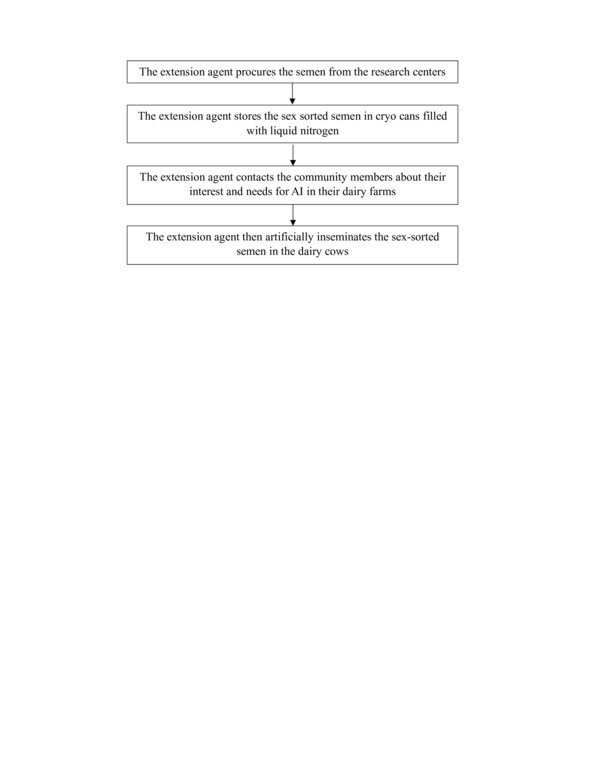
Author: Palden Wangchuk Dorji
Mise en œuvre et entretien : activités, intrants et coûts
Calcul des intrants et des coûts
- Les coûts sont calculés : par entité de la Technologie (unité : Number volume, length: AI straw)
- Monnaie utilisée pour le calcul des coûts : Ngultrum
- Taux de change (en dollars américains - USD) : 1 USD = 79.62 Ngultrum
- Coût salarial moyen de la main-d'oeuvre par jour : 600
Facteurs les plus importants affectant les coûts
Material cost, heat detection, distance
Activités de mise en place/ d'établissement
-
Procurement of sexed semen (Calendrier/ fréquence: Based on indent or the annual requirement at National level)
-
Storage of sexed semen (Calendrier/ fréquence: After procurement until distributed to dzongkhags at Central level)
-
Transportation and Distribution of sexed semen (Calendrier/ fréquence: As per schedule, every 45 days)
-
Storage of semen (Calendrier/ fréquence: semen bank at Veterinary Hospital and AI centre on regular basis)
-
Render Artificial insemination services to farmers by AI technician (Calendrier/ fréquence: Based on request of farmers reporting on animal showing heat signs)
-
Follow up on AI services (monitoring) (Calendrier/ fréquence: 18-22 days, repeat case, monthly report, ad hoc through phone call)
Intrants et coûts de mise en place (per Number)
| Spécifiez les intrants |
Unité |
Quantité |
Coûts par unité (Ngultrum) |
Coût total par intrant (Ngultrum) |
% des coût supporté par les exploitants des terres |
|
Main d'œuvre
|
| Community AI Technician |
person/Day |
2,0 |
1000,0 |
2000,0 |
|
|
Equipements
|
| Sexed semen AI |
per straw |
1,0 |
1500,0 |
1500,0 |
|
| golves |
No |
1,0 |
5,0 |
5,0 |
|
| AI sheath |
No |
1,0 |
16,0 |
16,0 |
|
| LN2 |
litre |
300,0 |
35,0 |
10500,0 |
|
| LN2 container (55 litre) |
No |
2,0 |
25050,0 |
50100,0 |
|
| Portable AI container (5 litres) |
No |
1,0 |
11200,0 |
11200,0 |
|
| Water boiler (3 litres) |
No |
1,0 |
2800,0 |
2800,0 |
|
| Jug |
No |
1,0 |
30,0 |
30,0 |
|
|
Matériel végétal
|
| Funnel |
No |
1,0 |
150,0 |
150,0 |
|
| Towel |
No |
1,0 |
100,0 |
100,0 |
|
| Flexible Dip stick |
No |
1,0 |
2500,0 |
2500,0 |
|
|
Matériaux de construction
|
| AI crates |
No |
1,0 |
45000,0 |
45000,0 |
|
|
Autre
|
| Travel |
km |
15,0 |
30,0 |
450,0 |
|
| Coût total de mise en place de la Technologie |
126'351.0 |
|
| Coût total de mise en place de la Technologie en dollars américains (USD) |
1'586.93 |
|
Activités récurrentes d'entretien
-
Storage of the sex sorted semen (Calendrier/ fréquence: When the semen is procured by the extension agent and before conducting AI)
Environnement naturel
Précipitations annuelles
-
< 250 mm
-
251-500 mm
-
501-750 mm
-
751-1000 mm
-
1001-1500 mm
-
1501-2000 mm
-
2001-3000 mm
-
3001-4000 mm
-
> 4000 mm
Zones agro-climatiques
-
humide
-
subhumide
-
semi-aride
-
aride
Spécifications sur le climat
Précipitations moyennes annuelles en mm : 100.0
The data was used from the National Center for Hydrology and Meteorology from the nearest weather station.
Nom de la station météorologique : https://www.nchm.gov.bt/home/pageMenu/906
Warm Temperate zone
Pentes moyennes
-
plat (0-2 %)
-
faible (3-5%)
-
modéré (6-10%)
-
onduleux (11-15%)
-
vallonné (16-30%)
-
raide (31-60%)
-
très raide (>60%)
Reliefs
-
plateaux/ plaines
-
crêtes
-
flancs/ pentes de montagne
-
flancs/ pentes de colline
-
piémonts/ glacis (bas de pente)
-
fonds de vallée/bas-fonds
Zones altitudinales
-
0-100 m
-
101-500 m
-
501-1000 m
-
1001-1500 m
-
1501-2000 m
-
2001-2500 m
-
2501-3000 m
-
3001-4000 m
-
> 4000 m
La Technologie est appliquée dans
-
situations convexes
-
situations concaves
-
non pertinent
Profondeurs moyennes du sol
-
très superficiel (0-20 cm)
-
superficiel (21-50 cm)
-
modérément profond (51-80 cm)
-
profond (81-120 cm)
-
très profond (>120 cm)
Textures du sol (de la couche arable)
-
grossier/ léger (sablonneux)
-
moyen (limoneux)
-
fin/ lourd (argile)
Textures du sol (> 20 cm sous la surface)
-
grossier/ léger (sablonneux)
-
moyen (limoneux)
-
fin/ lourd (argile)
Matière organique de la couche arable
-
abondant (>3%)
-
moyen (1-3%)
-
faible (<1%)
Profondeur estimée de l’eau dans le sol
-
en surface
-
< 5 m
-
5-50 m
-
> 50 m
Disponibilité de l’eau de surface
-
excès
-
bonne
-
moyenne
-
faible/ absente
Qualité de l’eau (non traitée)
-
eau potable
-
faiblement potable (traitement nécessaire)
-
uniquement pour usage agricole (irrigation)
-
eau inutilisable
La qualité de l'eau fait référence à: eaux de surface
La salinité de l'eau est-elle un problème ?
Présence d'inondations
Caractéristiques des exploitants des terres appliquant la Technologie
Orientation du système de production
-
subsistance (auto-approvisionnement)
-
exploitation mixte (de subsistance/ commerciale)
-
commercial/ de marché
Revenus hors exploitation
-
moins de 10% de tous les revenus
-
10-50% de tous les revenus
-
> 50% de tous les revenus
Niveau relatif de richesse
-
très pauvre
-
pauvre
-
moyen
-
riche
-
très riche
Niveau de mécanisation
-
travail manuel
-
traction animale
-
mécanisé/ motorisé
Sédentaire ou nomade
-
Sédentaire
-
Semi-nomade
-
Nomade
Individus ou groupes
-
individu/ ménage
-
groupe/ communauté
-
coopérative
-
employé (entreprise, gouvernement)
Âge
-
enfants
-
jeunes
-
personnes d'âge moyen
-
personnes âgées
Superficie utilisée par ménage
-
< 0,5 ha
-
0,5-1 ha
-
1-2 ha
-
2-5 ha
-
5-15 ha
-
15-50 ha
-
50-100 ha
-
100-500 ha
-
500-1 000 ha
-
1 000-10 000 ha
-
> 10 000 ha
Échelle
-
petite dimension
-
moyenne dimension
-
grande dimension
Propriété foncière
-
état
-
entreprise
-
communauté/ village
-
groupe
-
individu, sans titre de propriété
-
individu, avec titre de propriété
Droits d’utilisation des terres
-
accès libre (non organisé)
-
communautaire (organisé)
-
loué
-
individuel
Droits d’utilisation de l’eau
-
accès libre (non organisé)
-
communautaire (organisé)
-
loué
-
individuel
Accès aux services et aux infrastructures
emploi (par ex. hors exploitation)
eau potable et assainissement
Impact
Impacts socio-économiques
production fourragère
en baisse
en augmentation
Quantité avant la GDT: The cattle were normally grazed in the forest, so no fodder were produced.
Quantité après la GDT: Some of the land that were left fallowed were used for fodder production.
qualité des fourrages
en baisse
en augmentation
Quantité avant la GDT: Local cattles can feed on wild fodder grasses and trees
Quantité après la GDT: Improved cattles require quality fodder so they started growing improved fodders species like Super Napier grass, Napier grass, etc.
production animale
en baisse
en augmentation
Quantité avant la GDT: 5 liters of milk were produced from each dairy cow every day
Quantité après la GDT: 15 liters of milk are produced by each dairy cow everyday
The quantification was based on the amount of milk produced.
surface de production (nouvelles terres cultivées/ utilisées)
en baisse
en augmentation
Quantité avant la GDT: 5 acres of cultivated land
Quantité après la GDT: 1 acre of cultivated land
The land user now focuses mostly on dairy production and has converted some of the lands into pasture for grazing purposes while the rest has been left fallow. This is due to the absence of labour in the household.
dépenses pour les intrants agricoles
en augmentation
en baisse
This is due to the decrease in the cultivated land.
revenus agricoles
en baisse
en augmentation
Due to the increase in dairy production, the land user is greatly benefited from it.
charge de travail
en augmentation
en baisse
Since the land user focuses primarily on dairy, the amount of workload has relatively increased compared to the past, where she would only focus on agriculture, only.
Impacts socioculturels
sécurité alimentaire/ autosuffisance
Quantité avant la GDT: Mostly consumed food they produced in their household.
Quantité après la GDT: Diverse food products are available, together with dairy products.
Impacts écologiques
diversité végétale
en baisse
en augmentation
Quantité avant la GDT: Maize, wheat and potatoes were the only primary crops grown.
Quantité après la GDT: Maize, wheat, potatoes and several other cole crops and legumes are now cultivated by the land users.
Impacts hors site
impact des gaz à effet de serre
Quantité avant la GDT: more than 30 cattles including dairy cows and bulls
Quantité après la GDT: around 15 dairy cows
There is decrease in the number of cattle and they are mostly female.
Analyse coûts-bénéfices
Bénéfices par rapport aux coûts de mise en place
Rentabilité à court terme
très négative
très positive
Rentabilité à long terme
très négative
très positive
Bénéfices par rapport aux coûts d'entretien
Changement climatique
Changements climatiques progressifs
températures annuelles augmente
pas bien du tout
très bien
précipitations annuelles décroît
pas bien du tout
très bien
Extrêmes climatiques (catastrophes)
pluie torrentielle locale
pas bien du tout
très bien
pas bien du tout
très bien
pas bien du tout
très bien
pas bien du tout
très bien
infestation par des insectes/ vers
pas bien du tout
très bien
Adoption et adaptation de la Technologie
Pourcentage d'exploitants des terres ayant adopté la Technologie dans la région
-
cas isolés/ expérimentaux
-
1-10%
-
11-50%
-
> 50%
Parmi tous ceux qui ont adopté la Technologie, combien d'entre eux l'ont fait spontanément, à savoir sans recevoir aucune incitation matérielle ou aucun paiement ?
-
0-10%
-
11-50%
-
51-90%
-
91-100%
Nombre de ménages et/ou superficie couverte
28 households
La Technologie a-t-elle été récemment modifiée pour s'adapter à l'évolution des conditions ?
A quel changement ?
-
changements/ extrêmes climatiques
-
évolution des marchés
-
la disponibilité de la main-d'œuvre (par ex., en raison de migrations)
Conclusions et enseignements tirés
Points forts: point de vue de l'exploitant des terres
-
Produces desirable traits of offspring
-
Improved breed quality
-
Enhances dairy production
-
Produces female cattle
-
Manure from the cattle is used for revitalising the farmland.
Points forts: point de vue du compilateur ou d'une autre personne-ressource clé
-
It helps improve the land users livelihood by benefiting them economically.
-
Sexed semen technology produces desired sex cattle which also reduces the recurrent cost of doing AI again and again to get desired sex cattle.
-
Sexed semen technology can ultimately reduce number of unproductive cow which can reduce land degradation and reduce greenhouse gas emmission.
Faiblesses/ inconvénients/ risques: point de vue de l'exploitant des terrescomment surmonter
-
Sometimes the cattle do not conceive even after insemination.
The possibility of a cow not conceiving after an AI is very low, but it is recommended that the land user consult with the livestock agent or conduct AI again.
Faiblesses/ inconvénients/ risques: point de vue du compilateur ou d'une autre personne-ressource clécomment surmonter
-
Sexed semen technology reduces the male population, getting quality breeding bull will be difficult in future.
Allow the dairy cow to mate naturally once in their lifetime
-
Semen produced from the technology may become ineffective during the sorting procedure.
Follow appropriate procedures and double-check equipment.
Références
Examinateur
-
William Critchley
-
Rima Mekdaschi Studer
-
Joana Eichenberger
Date de mise en oeuvre: 6 juillet 2023
Dernière mise à jour: 30 mai 2024
Personnes-ressources
-
Tenzin Pem - exploitant des terres
Description complète dans la base de données WOCAT
Données de GDT correspondantes
La documentation a été facilitée par
Institution
- National Soil Services Centre, Department of Agriculture, Ministry of Agriculture & Livestock (NSSC) - Bhoutan
Projet
- Strengthening national-level institutional and professional capacities of country Parties towards enhanced UNCCD monitoring and reporting – GEF 7 EA Umbrella II (GEF 7 UNCCD Enabling Activities_Umbrella II)
Références clés
-
Guar et al. (2021). Sex Sorted Semen -Methods, Constraints and Future Perspective. Veterinary Research International, 8, 368-375.: https://www.researchgate.net/publication/354631046_Sex_Sorted_Semen_-Methods_Constraints_and_Future_Perspective
-
Singh et al. (2019). Sexed semen technology in cattle: A revolutionary technique in Indian dairy industry. 9, 946-950: https://www.researchgate.net/publication/337919029_Sexed_semen_technology_in_cattle_A_revolutionary_technique_in_Indian_dairy_industry/citation/download
-
Department of Animal Husbandry and Dauty. (2020). Accelerated Breed Improvement Programme -Using sex sorted semen for getting assured pregnancy. Govt. India: https://dahd.nic.in/sites/default/filess/Guidelines%20for%20sex%20sorted%20semen%20v3.pdf
-
Butler et al. (2015). The importance of recording in establishing the value of sexed semen to dairy farmers. The Irish Agriculture and Food Development Authority: https://www.icar.org/wp-content/uploads/2015/09/A2-Butler_PPT.pdf
-
Kumar et al. (2017). Sexed Semen Technology in Cattle. Indian Journal of Animal Health, 56(2), 157-168.: http://ijah.in/upload/snippet/145_53.pdf
-
Tshering, L. & Tamang, N. B. (2018). Decades of Artificial Insemination: Bittersweet Experiences on Cattle Breeding in Bhutan. Bhutan Journal of Animal Sciences, 2(1), 1-6.: https://www.researchgate.net/publication/353317476_DECADES_OF_ARTIFICIAL_INSEMINATION_BITTERSWEET_EXPERIENCES_ON_CATTLE_BREEDING_IN_BHUTAN
Liens vers des informations pertinentes disponibles en ligne
